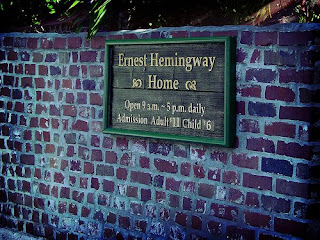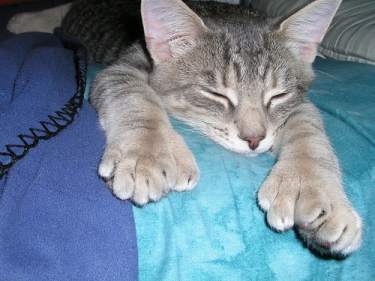The American polydactyl cat is an American cat with more than the usual number of toes. It is not a cat breed (in my view) although it is spoken of as such in the articles that I have read on the Internet. The problem with the phrase or name “American Polydactyl” is that it implies that this cat is a breed of cat with the same status as the many other cat breeds developed in America such as the American Shorthair and American Bobtail; there are others.

This cat is recognized by the Rare and Exotic Feline Registry and they talk of the cat as a specific cat breed and say that any cat with the extra toes can be registered. That runs counter to the usual method for establishing a cat breed. Is it possible to have a cat breed that is not purebred/pedigree?
There are possibly some breeders whose objective is to breed cats with more toes than is usual but these cats are not a recognized cat breed. In my view a cat breed is a breed when it is formally recognized by a cat registry and that happens over a period of time when the cat’s pedigree has been established.
There is also the genuine question as to whether there really is any sense in breeding a cat with extra digits. This is an abnormality. If we need to breed cats the objective should be to create healthy well balanced and attractive cats in good condition.
The name also implies that the polydactyl cat is specific to America – it is not. A genetic anomaly (mutation) can cause any individual cat to have more toes than usual. Some cat breeds are more prone to this because of their genetic inheritance, in the same way some cat breeds have a predisposition to certain health traits.
Some cat breeds are or were predisposed to having more than the usual digits. Examples are the Pixie-bob an American cat (an American polydactyl cat one could say) and the Maine Coon, one of the largest domestic cat breeds and one of the most popular domestic cat breeds.

Polydactylism in cats is associated with America through the famous author Earnest Hemingway. Earnest Hemingway was an American who lived in Florida (Key West), Cuba and Paris. He liked big game hunting.
He also liked polydactyl cats as he had a number of them at his home in Florida. He was given a polydactyl cat and it went from there, I presume because the cat wasn’t neutered or spayed. There are now about 60 cats at his former home about 30 of which are American Polydactyl cats. There are a number of proposed/experimental (call them what you like) cat breeds that are centered around Mr Hemingway. These are all potential American Polydactyl cat breeds:-
- Hemingway’s Breed (Hemingway tried to create his own breed)
- Hemingway Thai (see Thai cats) – colorpointed polyactyl cats
- Hemingway Spotted – Bengal mated with polydactyl cat to produce Bengal cats with extra digits
- Hemingway Sphynx – Yes a many toed Sphynx cat
- Hemingway Fold – Yes, a Scottish Fold with extra toes
- Hemingway Curl – this is a further mutation of the Hemingway cat to produce a cat with curled ears and extra toes. The American Curl is the established breed of cat with curled ears and the normal number of toes.
Polydactylism is caused by a dominant mutated gene that is not sex related. The gene is signified by the letters Pd. A dominant gene means that if a polydactly cat is mated with a non-polydactyl cat at least half of the offspring would have extra digits. It is a congenital deformity. The word “congenital” means present at birth. Polydactylism is generally benign (i.e. no secondary defects that impact the health) but, apparently, there is a bad form of it that has been described as the “thalidomide” or “twisty” mutation. It is a gene that causes a disease called triphalangeal pollex-radial hypoplasia.

American Polydactyl cats are more frequently found, it seems, in the East of America. This might be explained by the suggestion that American Polydactyl cats originate in England and were brought over with the early settlers to America. The Maine Coon for example is East American (Maine) and probably or possibly originates in early settlers importing the cat. Although the history of cat breeds is wondrously vague sometimes. See History of Maine Coon Cat.
There are English and Welsh Polydactyl cats too, none of which are cat breeds. Lastly this congenital condition is not confined to domestic cats. It affects other animals including big cats such as the tiger and humans. A famous person who had one too many fingers on his hands was the great Caribbean cricketer, Sir Garfield Sobers. The extra digit was surgically removed at birth.
Here is some more on Hemingway cats:
- Carlene Brennen wrote a book on them called,”Hemingway’s Cats,” published in 2006 by Pineapple Press.
- There are apparently 44 Hemingway cats as at the date of this update – not all are polydactyl.
- The house is currently owned by Mrs. Bernice Dixon who bought it in 1961.
- The cats are officially not allowed to go into the house but some do and get away with it.
- At 12, one of the oldest cats is Charlie Chaplin, named for a black spot on his upper lip.
- The cat’s names are chosen by the staff who manage the house
- The cats fend for themselves during the typical Florida hurricane we know about so well.
![]()
American Polydactyl cat to Household cats (mixed breed cats)
American Polydactyl cat – Sources:
- Wikipedia
- Myself
This page has been moved from another site for SEO reasons. I was written around 6 years ago.


Indeed, I correct myself. I found this polydactyl cat flexing all toes. https://www.youtube.com/watch?v=7E_qh6L_gXY
I’d also affectionately call them Cravendale cats (in the U.K.) just for fun, as I agree it’s not acceptable to think of them as a distinct cat breed. It’s an individual deformity, and tell me if I’m wrong but I don’t think it’s even functional. I should look this up before saying but I haven’t read that it is; there’s no tendon or muscle connection.